Tell me about the giant bell at Co Le Pagoda? SIXT.VN offers expert insights into this cultural treasure and Vietnamese tourism. Let’s explore the majestic Dai Hong Chung bell, a symbol of resilience and history, and discover how SIXT.VN can make your journey to Co Le Pagoda seamless, offering reliable airport transfers, various hotel booking options, and comprehensive Hanoi travel tours, ensuring you experience the best of Vietnamese travel with ease and convenience.
1. What Makes The Giant Bell at Co Le Pagoda So Special?
The giant bell at Co Le Pagoda, known as Dai Hong Chung, is special due to its immense size, historical significance, and unique creation. Cast in 1936, this bronze bell stands 4.2 meters tall with a diameter of 2.2 meters and a thickness of 8 centimeters. Its creation involved donations of gold jewelry from Buddhist followers, melted into the bronze as an act of reverence. Beyond its physical attributes, the bell’s history is intertwined with Vietnam’s wartime resilience, having been submerged in a lake to protect it from invaders. Today, it stands as a symbol of cultural heritage and historical perseverance. According to historical records, this bell represents a unique blend of religious devotion and community solidarity.
1.1. What Are The Dimensions and Materials Used To Create The Bell?
The Dai Hong Chung bell boasts impressive dimensions, standing 4.2 meters tall and 2.2 meters in diameter, with a bronze shell 8 centimeters thick. The bell was crafted using traditional materials, primarily bronze, and incorporating melted gold jewelry donated by Buddhist followers. This act of devotion added unique significance to the bell’s creation. The use of bronze ensures its durability and resonance, allowing it to serve as a lasting symbol of cultural heritage.
1.2. What Is The History Behind The Creation of The Giant Bell?
The history of the giant bell dates back to 1936 when it was cast at Co Le Pagoda. During its creation, Buddhist followers contributed gold jewelry, melted and mixed into the bronze, signifying their reverence and dedication. Shortly after its casting, the outbreak of war prompted locals to submerge the bell in a nearby lake to protect it from potential destruction by invaders. It remained submerged until 1954 when it was retrieved and placed on a stone pedestal, where it stands today as a testament to resilience and historical preservation. This act underscores the community’s commitment to preserving their cultural heritage amidst conflict.
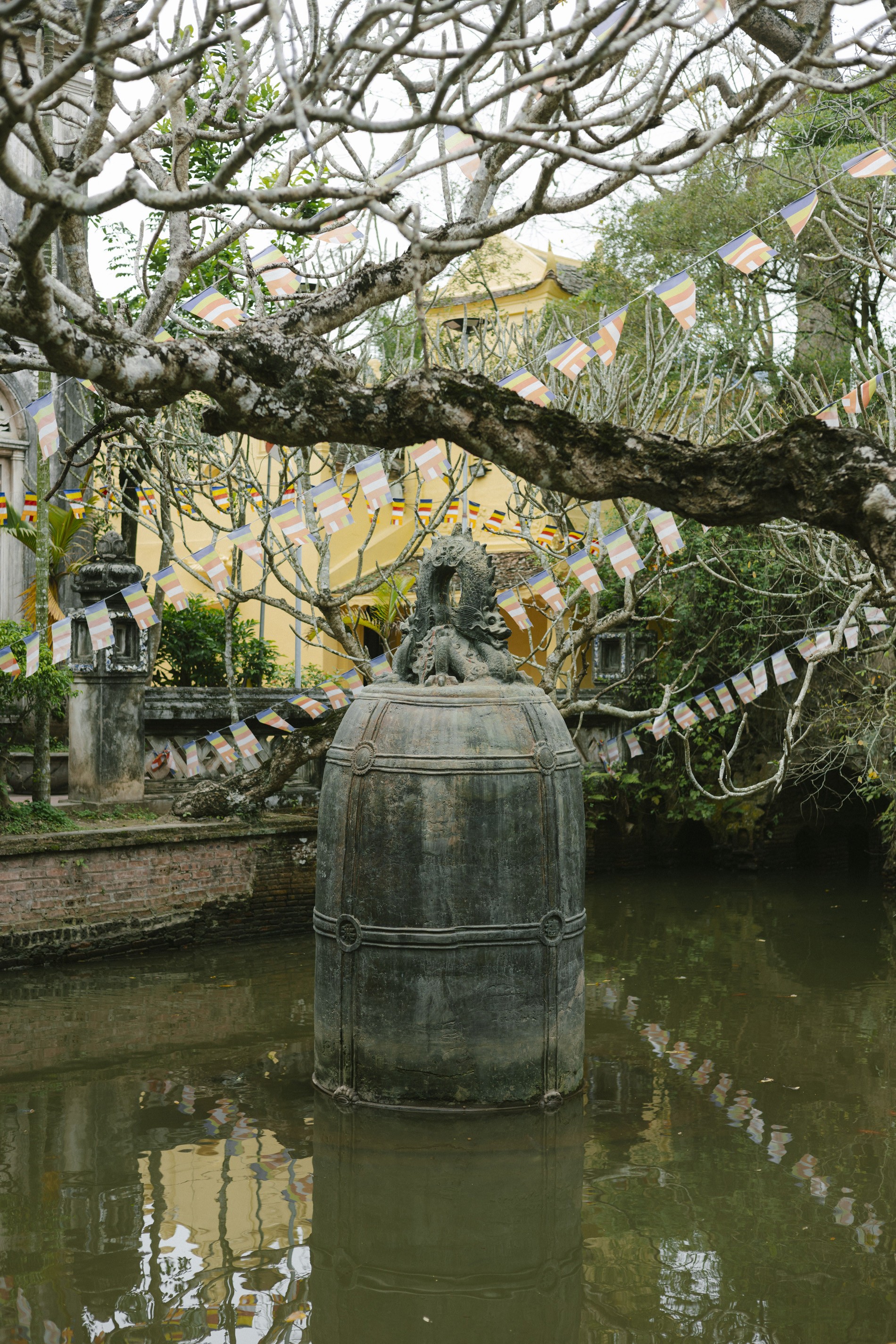 co le pagoda.jpg10.jpg
co le pagoda.jpg10.jpg
1.3. Why Was The Bell Submerged In A Lake?
The bell was submerged in a lake shortly after its creation to safeguard it from the ravages of war. During Vietnam’s resistance war, there was a fear that invaders might destroy or seize the bell. To prevent this, locals made the decision to hide the bell underwater, preserving it until the conflict ended. This act of protection highlights the bell’s importance as a cultural artifact and the community’s determination to preserve their heritage during turbulent times. According to local historical accounts, this decision was crucial in ensuring the bell’s survival.
2. Where Is Co Le Pagoda Located and How Can I Get There?
Co Le Pagoda is located in Nam Dinh province, Vietnam, approximately 90 kilometers (56 miles) southeast of Hanoi. To get there from Hanoi, you have several transportation options:
-
By Car/Taxi: The most convenient way is to hire a car or taxi through SIXT.VN. The journey takes around 2 to 2.5 hours, offering a comfortable and direct route.
-
By Bus: You can take a bus from Hanoi to Nam Dinh city, then take a local taxi or bus to Co Le Pagoda. Buses depart from major Hanoi bus stations like Giap Bat or My Dinh.
-
By Train: Take a train from Hanoi to Nam Dinh city, followed by a taxi or local bus to the pagoda.
SIXT.VN provides reliable airport transfer services, making your arrival and departure hassle-free.
2.1. What Are The Nearest Airports and Transportation Options To Co Le Pagoda?
The nearest airport to Co Le Pagoda is Noi Bai International Airport (HAN) in Hanoi. From the airport, the most convenient transportation options include:
-
SIXT.VN Airport Transfer: Pre-book a private car for a seamless and comfortable ride directly to Co Le Pagoda or your hotel in Nam Dinh.
-
Taxi: Available at the airport, but ensure the driver uses a meter or negotiate the fare beforehand.
-
Bus: Take a shuttle bus from the airport to Hanoi city center, then transfer to a bus heading to Nam Dinh.
2.2. Can SIXT.VN Help With Transportation To Co Le Pagoda?
Yes, SIXT.VN offers comprehensive transportation solutions to Co Le Pagoda. These include:
- Private Car Hire: Enjoy a comfortable and personalized journey with professional drivers.
- Airport Transfers: Arrange pick-up and drop-off services between Noi Bai International Airport and your accommodation in Nam Dinh.
- Custom Tours: Explore tailored tour packages that include transportation to and from Co Le Pagoda, as well as visits to other nearby attractions.
SIXT.VN ensures a stress-free travel experience with reliable and convenient transportation options.
2.3. What Are Some Nearby Attractions I Can Visit After Co Le Pagoda?
After visiting Co Le Pagoda, consider exploring these nearby attractions:
- Nam Dinh City: Discover historical sites, local markets, and traditional Vietnamese architecture.
- Tran Temple: Pay homage to the Tran Dynasty emperors at this significant historical and cultural site.
- Hai Hau Beach: Relax on the sandy shores and enjoy fresh seafood.
SIXT.VN can assist in arranging transportation and tours to these attractions, providing a comprehensive travel experience.
3. What Is The Architectural Significance of Co Le Pagoda?
Co Le Pagoda is architecturally significant due to its unique blend of Eastern and Western styles. Originally built during the Ly Dynasty and renovated in 1902, it combines traditional Vietnamese Buddhist architecture with Gothic-inspired designs. The pagoda features a “Tien Phat, Hau Thanh” layout, with Buddha in the front and Saints in the back, while incorporating vaulted ceilings and colorful frescoed walls reminiscent of Catholic cathedrals. The Nine-story Lotus Tower, standing 32 meters tall, symbolizes the nine celestial realms in Buddhist cosmology. This fusion of architectural elements makes Co Le Pagoda a distinctive and historically important site in Vietnam.
3.1. How Does Co Le Pagoda Blend Eastern and Western Architectural Styles?
Co Le Pagoda uniquely blends Eastern and Western architectural styles by integrating traditional Vietnamese Buddhist elements with Gothic-inspired designs. The “Tien Phat, Hau Thanh” layout reflects Eastern traditions, while the vaulted ceilings and colorful frescoed walls draw inspiration from Western Catholic cathedrals. Decorative motifs, carvings, and reliefs adorn the arched ceilings and walls, further emphasizing this fusion. This blend results in a distinctive architectural style that stands out in Vietnam.
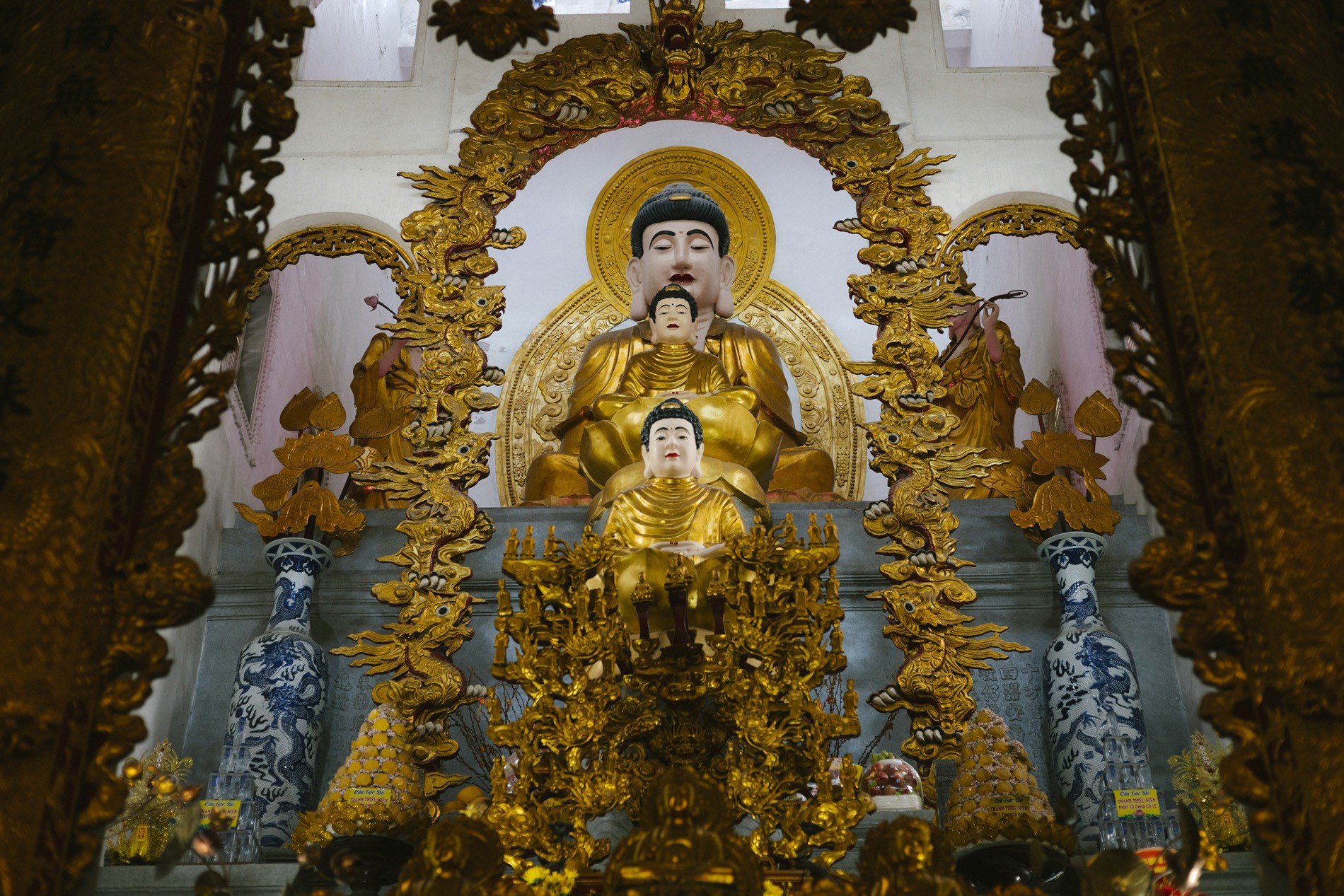 co le pagoda.jpg7.jpg
co le pagoda.jpg7.jpg
3.2. What Is The Significance of The Nine-Story Lotus Tower?
The Nine-story Lotus Tower at Co Le Pagoda holds significant symbolic value, representing the nine celestial realms in Buddhist cosmology. Standing 32 meters tall, the tower is constructed with nine stacked lotus petals. A spiral staircase with 98 steps leads to the top, offering panoramic views of the pagoda grounds and surrounding countryside. The Lotus Tower serves as a prominent symbol of spiritual ascent and enlightenment in Buddhist tradition.
3.3. What Traditional Materials Were Used To Build The Pagoda?
Co Le Pagoda was constructed using traditional materials such as lime, bricks, sand, molasses, and salt. Remarkably, modern materials like cement and steel were intentionally avoided, adhering to traditional building practices. This commitment to using traditional materials reflects a dedication to preserving historical authenticity and craftsmanship. The use of these materials contributes to the pagoda’s unique character and enduring appeal.
4. What Is The Cultural Significance of Co Le Pagoda and Its Festival?
Co Le Pagoda holds immense cultural significance as a unique spiritual tourism destination in Nam Dinh. Recognized as a National Architectural Heritage Site in 1988 and a National Intangible Cultural Heritage in 2023, the pagoda is a testament to Vietnam’s rich cultural and historical tapestry. The annual Co Le Pagoda Festival, held from the 13th to the 16th day of the ninth lunar month, commemorates Saint Nguyen Minh Khong with Buddhist ceremonies, traditional performances, cultural games, and dragon boat racing. The pagoda symbolizes resilience, historical preservation, and the harmonious blend of Eastern and Western cultures, making it a vital cultural landmark in Vietnam.
4.1. When Is The Annual Co Le Pagoda Festival Held?
The annual Co Le Pagoda Festival is held from the 13th to the 16th day of the ninth lunar month. This festival commemorates Saint Nguyen Minh Khong and features a variety of cultural and religious activities. Visitors can participate in Buddhist ceremonies, traditional spiritual performances, cultural and folk games, and dragon boat racing on the river surrounding the pagoda. The festival provides a vibrant and immersive cultural experience.
4.2. What Activities Take Place During The Co Le Pagoda Festival?
During the Co Le Pagoda Festival, visitors can engage in a wide range of activities, including:
- Buddhist Ceremonies and Processions: Participate in religious rituals and processions honoring Saint Nguyen Minh Khong.
- Traditional Spiritual Performances: Enjoy traditional music, dance, and theatrical performances.
- Cultural and Folk Games: Partake in folk games and activities that showcase Vietnamese culture.
- Dragon Boat Racing: Witness thrilling dragon boat races on the river surrounding the pagoda.
These activities offer a rich and immersive cultural experience for all attendees.
4.3. How Was The Co Le Pagoda Festival Recognized Nationally?
In 2023, the Co Le Pagoda Festival was officially recognized as a National Intangible Cultural Heritage by the Ministry of Culture, Sports, and Tourism. This recognition underscores the festival’s significance in preserving and promoting Vietnamese cultural traditions. The festival’s unique blend of religious ceremonies, traditional performances, and cultural activities highlights its importance as a cultural landmark in Vietnam.
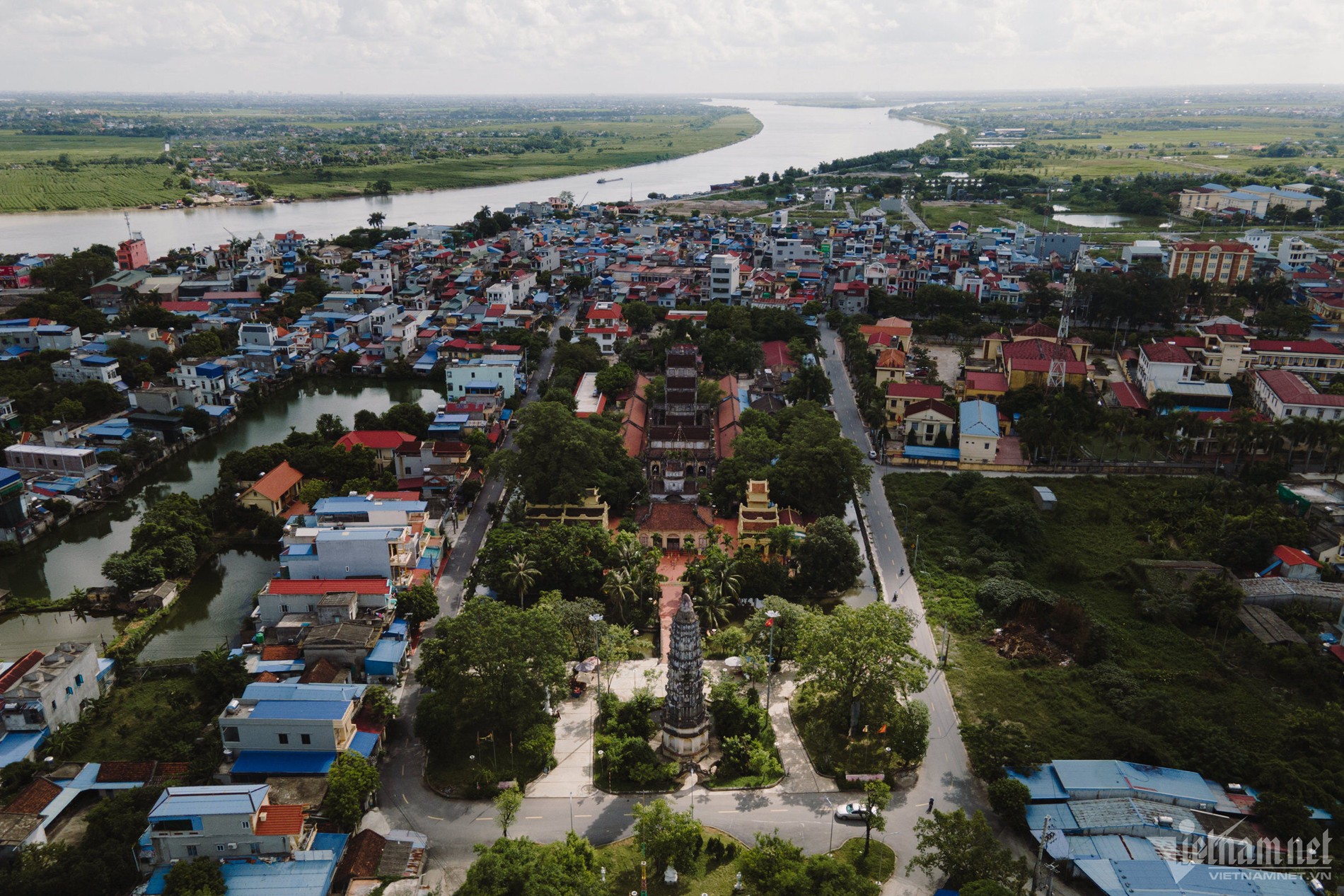 co le pagoda.jpg
co le pagoda.jpg
5. What Services Does SIXT.VN Offer To Enhance My Trip To Co Le Pagoda?
SIXT.VN offers a range of services designed to enhance your trip to Co Le Pagoda, ensuring a seamless and memorable experience. These services include:
- Airport Transfers: Enjoy hassle-free transportation from Noi Bai International Airport to your accommodation in Nam Dinh.
- Hotel Bookings: Choose from a variety of hotels to suit your budget and preferences.
- Private Car Hire: Explore the region at your own pace with professional drivers.
- Custom Tours: Discover tailored tour packages that include visits to Co Le Pagoda and other nearby attractions.
With SIXT.VN, you can relax and focus on enjoying your journey, knowing that your travel needs are well taken care of.
5.1. How Can SIXT.VN Help With Airport Transfers?
SIXT.VN provides reliable and convenient airport transfer services from Noi Bai International Airport (HAN) to your desired destination in Nam Dinh. By pre-booking a private car with SIXT.VN, you can avoid the stress of finding transportation upon arrival. A professional driver will greet you at the airport and ensure a comfortable and direct ride to your hotel or Co Le Pagoda, making your arrival seamless and stress-free.
5.2. What Types of Accommodation Can I Book Through SIXT.VN?
SIXT.VN offers a wide selection of accommodation options to suit every traveler’s needs and preferences. You can book:
- Luxury Hotels: Enjoy premium amenities and services for a luxurious stay.
- Mid-Range Hotels: Choose comfortable and well-equipped hotels at affordable prices.
- Budget-Friendly Options: Find guesthouses and budget hotels that offer clean and convenient accommodations.
SIXT.VN provides detailed information and customer reviews to help you make the best choice for your stay in Nam Dinh.
5.3. Can SIXT.VN Arrange Custom Tours To Co Le Pagoda and Surrounding Areas?
Yes, SIXT.VN specializes in creating custom tour packages tailored to your specific interests and preferences. Whether you want a guided tour of Co Le Pagoda, a multi-day excursion to nearby attractions, or a combination of cultural and historical experiences, SIXT.VN can design the perfect itinerary for you. With expert guides and comfortable transportation, you can explore the region with ease and convenience.
6. What Should I Know Before Visiting Co Le Pagoda?
Before visiting Co Le Pagoda, it’s helpful to know a few essential details:
- Dress Code: Dress respectfully, covering shoulders and knees.
- Footwear: Remove your shoes before entering the main prayer halls.
- Photography: Ask for permission before taking photos, especially during religious ceremonies.
- Opening Hours: Check the pagoda’s opening hours in advance.
- Local Customs: Be mindful of local customs and traditions.
Being prepared will enhance your visit and show respect for the cultural significance of the site.
6.1. Are There Any Specific Dress Code Requirements For Visiting The Pagoda?
Yes, when visiting Co Le Pagoda, it is important to dress respectfully. Visitors should wear clothing that covers their shoulders and knees. Avoid wearing revealing or overly casual attire. Dressing modestly demonstrates respect for the religious and cultural significance of the site. This practice is in line with common customs at religious sites throughout Vietnam.
6.2. What Are The Best Times To Visit Co Le Pagoda?
The best times to visit Co Le Pagoda are during the dry season (from November to April) for pleasant weather. Arriving early in the morning or late in the afternoon can help you avoid crowds and experience the pagoda in a more peaceful setting. Additionally, visiting during the Co Le Pagoda Festival (from the 13th to the 16th day of the ninth lunar month) offers a unique opportunity to witness vibrant cultural and religious activities.
6.3. Are There Any Entrance Fees or Guidelines For Tourists?
Co Le Pagoda typically does not charge an entrance fee, but donations are always welcome. Tourists should be mindful of the following guidelines:
- Respectful Behavior: Maintain a quiet and respectful demeanor while on the pagoda grounds.
- Photography: Seek permission before taking photographs, especially during religious ceremonies.
- Offerings: If you wish to make an offering, follow the guidance of temple staff or local devotees.
- Cleanliness: Help keep the pagoda clean by disposing of any trash properly.
Adhering to these guidelines ensures a respectful and enjoyable visit for everyone.
7. How Can I Incorporate a Visit To Co Le Pagoda Into A Larger Trip Around Vietnam?
Incorporating a visit to Co Le Pagoda into a larger trip around Vietnam is easily achievable, especially with the help of SIXT.VN. Here’s how you can do it:
- Hanoi as a Starting Point: Begin your journey in Hanoi, where Noi Bai International Airport is located. Spend a few days exploring Hanoi’s attractions before heading to Nam Dinh.
- Day Trip or Overnight Stay: Plan a day trip to Co Le Pagoda from Hanoi, or opt for an overnight stay in Nam Dinh to explore the city and nearby attractions.
- Connecting Destinations: From Nam Dinh, you can travel to other destinations such as Ha Long Bay, Ninh Binh, or continue south to explore central and southern Vietnam.
SIXT.VN offers transportation, accommodation, and tour services to seamlessly integrate Co Le Pagoda into your broader Vietnam itinerary.
7.1. What Are Some Recommended Itineraries That Include Co Le Pagoda?
Here are a few recommended itineraries that include a visit to Co Le Pagoda:
-
Hanoi – Nam Dinh – Ha Long Bay (5 Days):
- Day 1-2: Explore Hanoi
- Day 3: Day trip to Co Le Pagoda from Hanoi, overnight in Nam Dinh.
- Day 4-5: Travel to Ha Long Bay and enjoy a cruise.
-
Hanoi – Ninh Binh – Nam Dinh (4 Days):
- Day 1-2: Explore Hanoi.
- Day 3: Visit Ninh Binh (Tam Coc, Trang An).
- Day 4: Travel to Nam Dinh, visit Co Le Pagoda, return to Hanoi.
-
Cultural and Historical Tour (7 Days):
- Day 1-2: Hanoi.
- Day 3: Co Le Pagoda and Nam Dinh City.
- Day 4-5: Hue (Imperial City, Perfume River).
- Day 6-7: Hoi An (Ancient Town, beaches).
SIXT.VN can customize these itineraries to suit your interests and preferences.
7.2. How Can SIXT.VN Help Me Plan a Multi-City Trip Around Vietnam?
SIXT.VN provides comprehensive travel planning services to help you organize a seamless multi-city trip around Vietnam. These services include:
- Transportation: Arrange flights, trains, and private car services between cities.
- Accommodation: Book hotels and resorts in various locations to match your budget and preferences.
- Tours and Activities: Discover and book guided tours and activities in each city.
- Custom Itineraries: Design personalized itineraries tailored to your interests and travel style.
With SIXT.VN, you can enjoy a stress-free and well-organized trip, exploring the best of Vietnam with ease.
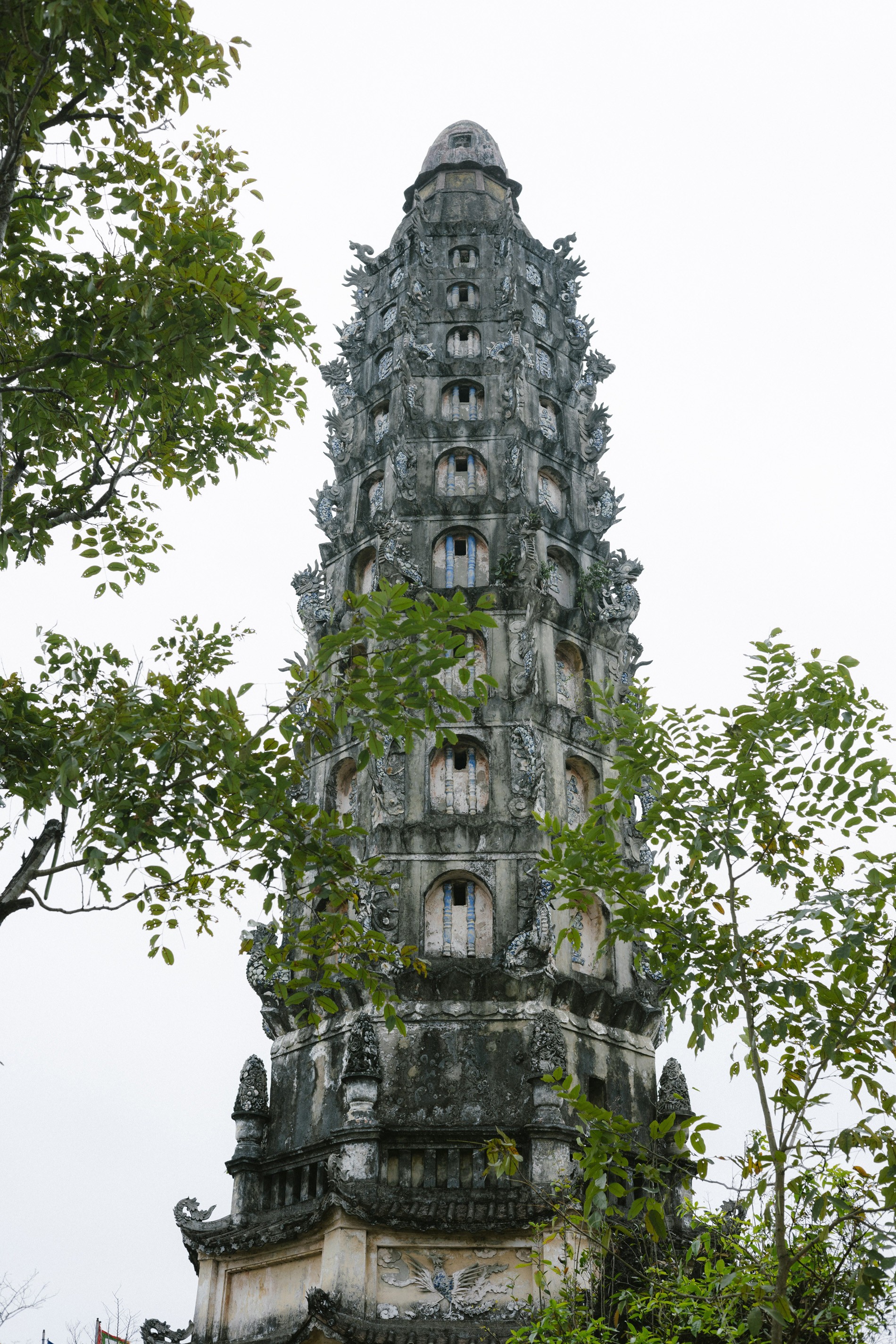 co le pagoda.jpg8.jpg
co le pagoda.jpg8.jpg
7.3. Are There Any Package Deals Available That Include a Visit To Co Le Pagoda?
Yes, SIXT.VN offers package deals that include a visit to Co Le Pagoda. These packages often combine transportation, accommodation, and guided tours to provide a convenient and cost-effective travel solution. Package deals can be customized to suit your specific needs and preferences, ensuring a memorable and hassle-free experience. Contact SIXT.VN to explore available package options and create your ideal Vietnam tour.
8. What Are Some Interesting Facts About The Giant Bell and Co Le Pagoda?
Here are some interesting facts about the giant bell and Co Le Pagoda:
- Unique Creation: The bell was created using donations of gold jewelry from Buddhist followers.
- Wartime Protection: It was submerged in a lake to protect it from destruction during the war.
- Architectural Blend: Co Le Pagoda uniquely combines Eastern and Western architectural styles.
- Nine-Story Tower: The Nine-story Lotus Tower symbolizes the nine celestial realms in Buddhist cosmology.
- Cultural Heritage: Co Le Pagoda is recognized as a National Architectural Heritage Site and the festival as a National Intangible Cultural Heritage.
8.1. How Did Buddhist Followers Contribute To The Bell’s Creation?
Buddhist followers contributed to the bell’s creation by donating gold jewelry, which was then melted and mixed into the bronze. This act of devotion and reverence added significant spiritual value to the bell. The inclusion of these precious metals symbolizes the community’s collective commitment to their faith and the pagoda. This unique aspect of the bell’s creation underscores its importance as a sacred and cherished artifact.
8.2. What Is The Significance of The Bell’s Submersion During The War?
The submersion of the bell during the war highlights the community’s determination to protect their cultural heritage from destruction. Fearing that invaders would destroy or seize the bell, locals made the courageous decision to hide it in a lake. This act of preservation underscores the bell’s significance as a symbol of resilience and cultural identity. The bell’s eventual retrieval and restoration further solidified its importance as a national treasure.
8.3. How Does Co Le Pagoda Represent A Blend Of Cultures?
Co Le Pagoda represents a blend of cultures through its unique architectural design, which combines traditional Vietnamese Buddhist elements with Gothic-inspired features. The pagoda’s layout follows the “Tien Phat, Hau Thanh” tradition, while the vaulted ceilings and colorful frescoes reflect Western influences. This fusion of styles creates a distinctive and harmonious blend of Eastern and Western aesthetics, symbolizing cultural exchange and integration.
9. How Does The Local Community View The Giant Bell and Co Le Pagoda?
The local community holds the giant bell and Co Le Pagoda in high regard, viewing them as symbols of cultural identity, religious devotion, and historical resilience. The pagoda serves as a central gathering place for religious ceremonies, festivals, and community events. The bell, in particular, is revered for its unique creation, wartime protection, and enduring presence. The community’s deep connection to Co Le Pagoda is evident in their continued efforts to preserve and promote its cultural significance.
9.1. How Does Co Le Pagoda Contribute To The Local Economy?
Co Le Pagoda contributes significantly to the local economy by attracting tourists and pilgrims from all over Vietnam and beyond. The influx of visitors supports local businesses, including hotels, restaurants, transportation services, and souvenir shops. The annual Co Le Pagoda Festival also generates substantial economic activity, providing income opportunities for local vendors, performers, and artisans. By promoting tourism and cultural heritage, Co Le Pagoda plays a vital role in sustaining the local economy.
9.2. What Efforts Are Being Made To Preserve Co Le Pagoda and The Giant Bell?
Efforts to preserve Co Le Pagoda and the giant bell involve a combination of local initiatives and government support. Regular maintenance and restoration work are carried out to protect the pagoda’s architectural integrity and prevent deterioration. The giant bell is carefully monitored and maintained to ensure its preservation for future generations. Additionally, cultural heritage programs and educational initiatives are implemented to raise awareness and promote the pagoda’s historical and cultural significance.
9.3. How Can Tourists Support The Preservation of Co Le Pagoda?
Tourists can support the preservation of Co Le Pagoda in several ways:
- Respect Cultural Customs: Dress modestly, behave respectfully, and follow local guidelines.
- Make Donations: Contribute to the pagoda’s upkeep through donations.
- Support Local Businesses: Patronize local hotels, restaurants, and shops.
- Spread Awareness: Share your experiences and promote the pagoda’s cultural significance to others.
- Participate Responsibly: Engage in tourism activities that minimize environmental impact and respect local traditions.
By practicing responsible and respectful tourism, visitors can help ensure the long-term preservation of Co Le Pagoda.
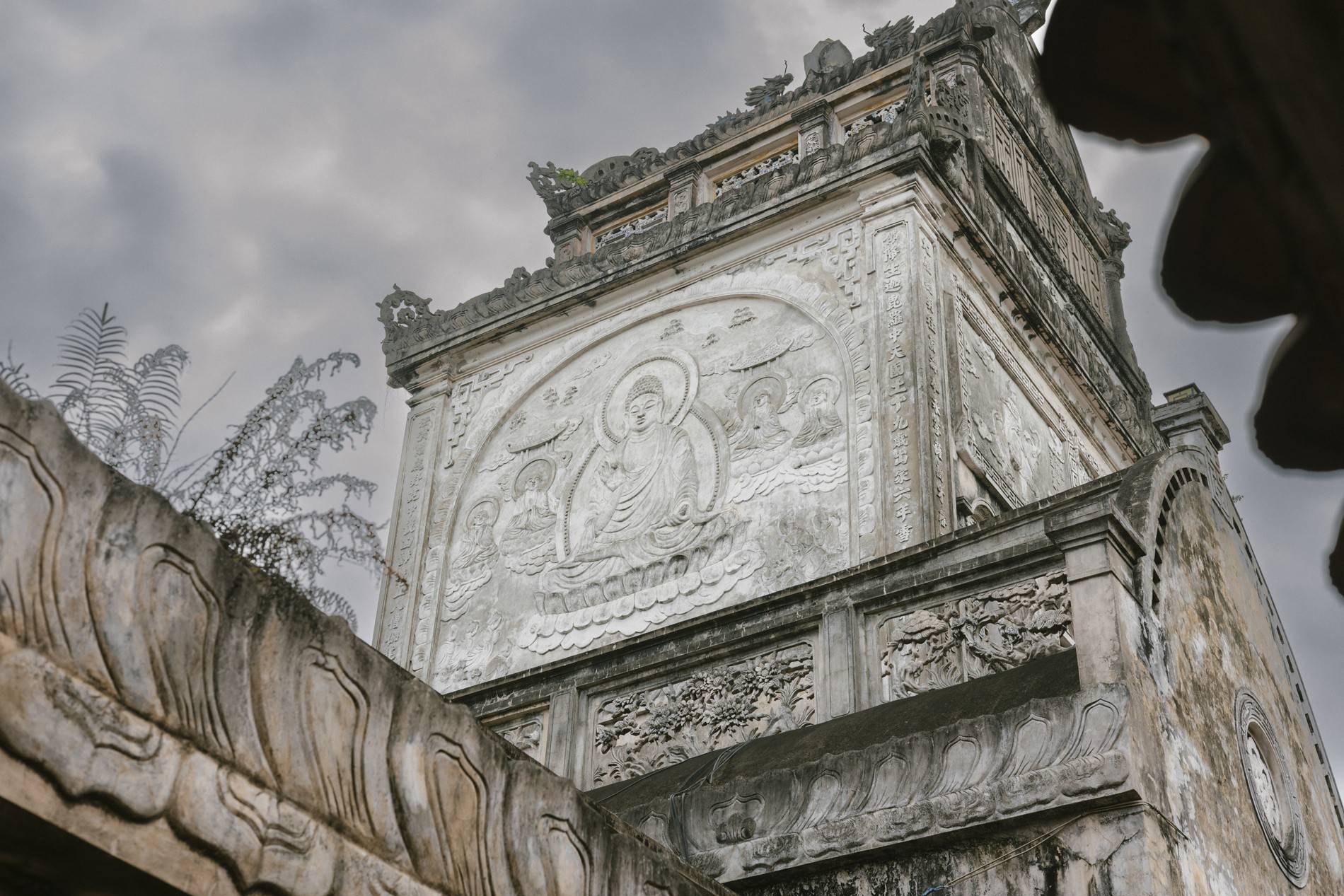 co le pagoda.jpg9.jpg
co le pagoda.jpg9.jpg
10. What Are Some Frequently Asked Questions About The Giant Bell at Co Le Pagoda?
Here are some frequently asked questions about the giant bell at Co Le Pagoda:
- How tall is the giant bell? The bell stands 4.2 meters tall.
- What is the bell made of? The bell is made of bronze, with melted gold jewelry incorporated into the metal.
- When was the bell cast? The bell was cast in 1936.
- Why was the bell submerged in a lake? To protect it from destruction during the war.
- Is there an entrance fee to visit Co Le Pagoda? No, there is typically no entrance fee, but donations are welcome.
- What should I wear when visiting the pagoda? Dress respectfully, covering shoulders and knees.
- Can I take photos at the pagoda? Ask for permission before taking photos, especially during religious ceremonies.
- When is the Co Le Pagoda Festival held? From the 13th to the 16th day of the ninth lunar month.
- How can I get to Co Le Pagoda from Hanoi? Options include private car, bus, or train.
- Does SIXT.VN offer transportation to Co Le Pagoda? Yes, SIXT.VN offers private car hire, airport transfers, and custom tours.
10.1. How Tall Is The Giant Bell at Co Le Pagoda?
The giant bell at Co Le Pagoda, known as Dai Hong Chung, stands impressively tall at 4.2 meters. This height makes it one of the largest ancient bronze bells in Vietnam. The bell’s towering presence is a significant feature of the pagoda, drawing visitors who marvel at its size and historical significance. According to historical records, its height contributes to its imposing presence and acoustic resonance.
10.2. What Is The Giant Bell Made Of?
The giant bell at Co Le Pagoda is primarily made of bronze. During its creation in 1936, Buddhist followers contributed gold jewelry, which was melted and mixed into the bronze. This unique addition not only enhances the bell’s material composition but also imbues it with significant spiritual value. The use of bronze ensures durability and resonance, allowing the bell to serve as a lasting symbol of cultural heritage.
10.3. Why Was The Giant Bell Submerged In A Lake?
The giant bell was submerged in a lake to protect it from potential destruction or seizure during Vietnam’s resistance war. Fearing that invaders would target the bell, locals made the decision to hide it underwater. This act of preservation underscores the bell’s importance as a cultural artifact and the community’s commitment to safeguarding their heritage during turbulent times. It remained submerged until 1954, after the war had ended.
Visiting Co Le Pagoda and witnessing the majestic Dai Hong Chung bell is an enriching experience that offers a glimpse into Vietnam’s rich cultural and historical heritage. Let SIXT.VN enhance your journey with reliable transportation, comfortable accommodation, and expertly crafted tour packages. Contact SIXT.VN today to plan your unforgettable adventure and discover the beauty of Vietnamese travel with ease and convenience. Address: 260 Cau Giay, Hanoi, Vietnam. Hotline/Whatsapp: +84 986 244 358. Visit our website at SIXT.VN.



